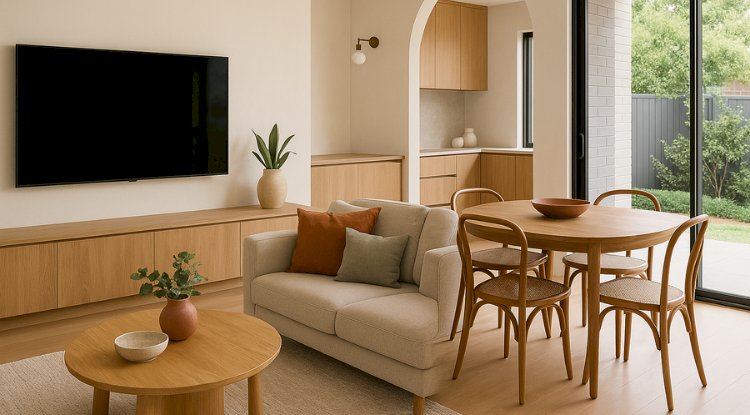Why Landscape Irrigation is Vital to Your Landscape Design
Learn the importance of irrigation, how to create a functional design, and why ignoring it can make your efforts or hard work go to waste.
Why Landscape Irrigation is Vital to Your Landscape Design
The term landscape design takes you to picture, perfectly trimmed hedges, the deep green beautiful lawn, a stone path through the flower beds. It takes an ongoing care and maintenance to keep the garden stunning. But what really keeps the landscape garden alive? The quality of the water or the irrigation system can keep your garden lush green as per the season. Without proper irrigation, even the most stunning garden starts to lose its spark.
In Adelaide landscaping, where the sun can be harsh and rain doesn’t always show up when you want it to, irrigation becomes a necessity.
In this article, you will learn the importance of irrigation, how to create a functional design, and why ignoring it can make your efforts or hardwork gone in waste.
-
The Foundation of a Living Landscape
Good landscaping is about creating an ecosystem to sustain itself with minimal care. Watering is the core of balancing the eco-system. You can use the best soil, choose the hardiest plants, and end up disappointed if your watering system can’t keep up.
Irrigation is not a decoration; it’s the invisible structure that keeps everything above ground alive and balanced.
-
When Design and Function Meet
The best landscape designs merge function with aesthetics and irrigation is where that harmony happens. In dry climates like Adelaide’s, irrigation systems are divided into zones. Lawns, trees, and flower beds each have different needs, so they’re watered separately. A drip system might feed your garden beds while sprinklers handle open turf areas. It’s not about over-engineering; it’s about precision, giving each part of your landscape what it actually needs.
Adelaide landscaping teams approach irrigation as part of the design from day one. It’s not a separate project. Pipes are hidden beneath mulch, sensors adjust watering based on the weather, and the whole system works in the background while the garden thrives.
-
Water Efficiency: A Smarter Way to Care
People sometimes think irrigation is about convenience, but that’s only part of it. It’s also about efficiency. When done right, irrigation uses less water than manual watering, not more. Smart systems adjust to the temperature, detect rainfall, and shut off automatically when the soil has enough moisture.
Overwatering can be as damaging as drought. You’ve probably seen it before: yellowing leaves, drooping stems, that soggy patch that never really recovers. Consistent, measured watering avoids all of that.
What’s interesting is that water efficiency doesn’t protect plants. It protects the soil. It keeps nutrients from washing away, prevents erosion, and maintains structure.
-
Beauty, Subtly Supported
When you walk through a truly well-maintained garden, you can almost feel the difference. The plants look balanced. Their colours are richer. There’s no visible stress in the leaves or soil. That doesn’t happen by accident; it’s irrigation doing its quiet work.
Designers weave irrigation into the plan so naturally that you barely notice it.
Sprinklers sit low, drip lines are hidden, and everything blends with the landscape. That subtlety is what makes great design feel effortless, it’s not that there’s no system, it’s that the system works so well you forget it’s there.
-
What Often Goes Wrong
The biggest mistake people make is thinking irrigation doesn’t need maintenance. It does, otherwise, you will notice sprinkler heads get blocked, pipes leak, and pressure changes. These are little things, but they add up.
Another is assuming that more water means healthier plants. It’s an easy trap, the idea that a daily soak will make things greener. In reality, plants need balance. Some prefer drier soil; others need consistent moisture. In Adelaide’s conditions, too much water can harm native species as much as too little.
A quick check every season, even walking through your garden while the system’s running can help catch small issues before they cause real damage.
-
Adapting to Climate Change
Weather patterns are shifting. Summers are longer, rain is less predictable, and that puts extra pressure on gardens. Irrigation gives your landscape a kind of built-in resilience.
Modern systems can sense changes in humidity or rainfall and adjust automatically. That means your garden doesn’t have to depend on your schedule or guesswork.
-
Why Expertise Matters
If you have smaller space, you can setup a DIY irrigation system. Large and complex designs can work better with strategic planning. Local experts with good understanding or knowledge of adelaide landscaping can balance aesthetics with practical needs.
They’ll consider things like soil type, plant species, water pressure, and slope. These aren’t details most homeowners think about, but they make a huge difference in how evenly and efficiently your garden gets watered.
-
A Landscape That Grows with You
The beauty of a good irrigation system is that it doesn’t stay static. It can grow with your garden. Add a new section, replace plants, or redesign an area, the system adapts. It’s not about watering plants; it’s about supporting a living, changing space.
When everything works together, design, planting, and irrigation, the result feels organic, almost effortless. You don’t see the pipes or the sensors; you just see life.
Conclusion
A landscape without irrigation is like architecture without structure. It might look good for a while, but it won’t last. Water, managed the right way, gives strength and rhythm to your design.
In Adelaide landscaping, where water conservation and plant resilience are key, irrigation isn’t optional. It’s the difference between a design that survives and one that thrives.
Share
What's Your Reaction?
 Like
0
Like
0
 Dislike
0
Dislike
0
 Love
0
Love
0
 Funny
0
Funny
0
 Angry
0
Angry
0
 Sad
0
Sad
0
 Wow
0
Wow
0
















